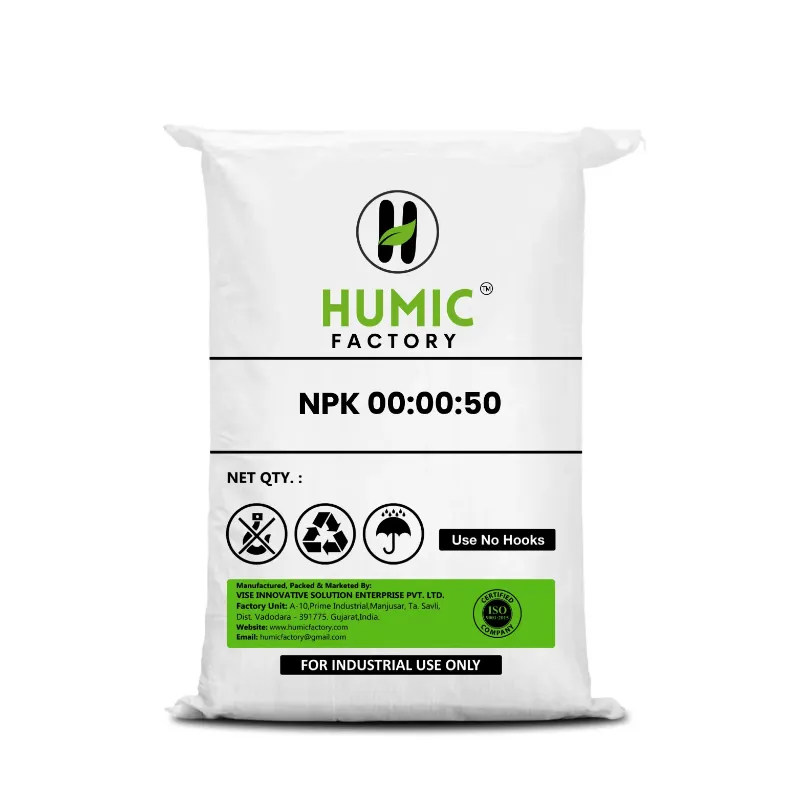Humic acid can indeed help with nutrient deficiencies in plants by improving nutrient availability, uptake, and utilization in the soil-plant system. Nutrient deficiencies are a common problem in agricultural and horticultural systems. Often resulting from poor soil fertility, imbalanced nutrient ratios, adverse environmental conditions, or inadequate nutrient management practices. Humic acid, as a natural soil amendment derived from organic sources. Offers several mechanisms to address nutrient deficiencies and promote optimal plant nutrition. Here are several key points explaining how humic acid can help with nutrient deficiencies in plants:
1. Enhanced Nutrient Availability:
Humic acid enhances nutrient availability in soil by improving the solubility and mobility of essential nutrients. Such as nitrogen (N), phosphorus (P), potassium (K), calcium (Ca), magnesium (Mg), and micronutrients (e.g., iron, zinc, manganese). It chelates metal ions, forming stable complexes with nutrients that prevent them from becoming chemically unavailable or immobile in soil. This increased nutrient availability ensures that plants have access to essential nutrients required for healthy growth and development, even in nutrient-deficient soils.
2. Improved Nutrient Uptake:
Humic acid facilitates nutrient uptake by plant roots through several mechanisms. It stimulates root growth and development, increasing the surface area and volume of roots available for nutrient absorption. Additionally, humic acid enhances the permeability of root cell membranes, allowing for more efficient nutrient uptake from the soil solution. It also promotes the activity of root hairs and mycorrhizal fungi. Which play crucial roles in nutrient acquisition and transport in the rhizosphere.
3. Chelation of Micronutrients:
Humic acid chelates micronutrients such as iron (Fe), zinc (Zn), copper (Cu), manganese (Mn), and boron (B), forming stable complexes that protect these nutrients from precipitation, oxidation, or fixation in soil. This chelation process increases the availability and uptake of micronutrients by plant roots. Ensuring that plants receive adequate amounts of these essential nutrients to overcome micronutrient deficiencies and maintain optimal growth and productivity.
4. Reduction of Nutrient Fixation:
Humic acid reduces nutrient fixation in soil by preventing nutrients from binding to soil particles or forming insoluble compounds that are unavailable for plant uptake. It competes with soil minerals for nutrient binding sites, displacing nutrients from mineral surfaces and keeping them in a bioavailable form in the soil solution. This reduces nutrient immobilization and enhances nutrient cycling, ensuring that nutrients remain accessible to plants and are not sequestered in unavailable forms.
5. Stimulation of Nutrient Mineralization:
Humic acid stimulates nutrient mineralization in soil by promoting the activity of soil microorganisms involved in organic matter decomposition and nutrient cycling. It provides a favorable environment for beneficial soil microorganisms. Including bacteria, fungi, and actinomycetes, which break down organic matter and release nutrients in plant-available forms. This enhances nutrient mineralization and nutrient cycling in soil, increasing the availability of nutrients for plant uptake and alleviating nutrient deficiencies.
6. Optimization of Nutrient Use Efficiency:
Humic acid improves nutrient use efficiency in plants by enhancing nutrient uptake, assimilation, and utilization. It increases the efficiency of nutrient absorption by plant roots, reduces nutrient losses through leaching or runoff, and promotes the efficient utilization of nutrients within plant tissues. This optimization of nutrient use efficiency allows plants to maximize the benefits of available nutrients, even in nutrient-deficient or low-fertility soils.
7. Mitigation of Nutrient Imbalances:
Humic acid helps mitigate nutrient imbalances in soil by promoting balanced nutrient uptake and utilization by plants. It enhances the availability and uptake of essential nutrients while also regulating nutrient interactions and antagonisms in the soil-plant system. By optimizing nutrient balance and ratios, humic acid supports healthy plant growth and development. Minimizing the risk of nutrient deficiencies or toxicities that can adversely affect crop productivity.
8. Promotion of Plant Health and Stress Tolerance:
Humic acid enhances plant health and stress tolerance by ensuring adequate nutrient supply. Which is essential for maintaining physiological processes, biochemical reactions, and defense mechanisms in plants. Nutrient-deficient plants are more susceptible to environmental stresses such as drought, salinity, heat, and pest infestations. By addressing nutrient deficiencies, humic acid helps plants withstand and recover from stressors, ensuring their continued growth and productivity.
In summary, humic acid can help with nutrient deficiencies in plants by enhancing nutrient availability, uptake, and utilization in the soil-plant system. Its ability to improve nutrient solubility, chelate micronutrients, reduce nutrient fixation, stimulate nutrient mineralization, optimize nutrient use efficiency, mitigate nutrient imbalances, and promote plant health and stress tolerance makes it a valuable tool for addressing nutrient deficiencies and promoting optimal plant nutrition. By incorporating humic acid into nutrient management practices, growers can improve soil fertility, enhance plant growth, and maximize crop productivity in agricultural and horticultural systems.





